The
pictures of this kite I found once on the Internet in a little
catalogue were very nice. And as the text of the catalogue promised
the kite must be a perfect illusion of a real airplane with the
perfect imitation of the sound of an airplane
motor.
After
a second look at the kite, it seemed to me that it couldn't be a
perfect flyer. But however, this was a kite you like to have at the
end of a string in the air, just once for the experience. A really
nice one to hold in your hands and get in the
air.
So
when I started to build this kite I knew that I wasn't working on a
great flyer. But that it should have such an awful look in the sky,
that was really depressing. It really looked like a burnt bird, and
did absolutely not have the 'perfect illusion of an airplane'. So I
must have done something wrong.
What
to do to keep the kite in the air
It
was absolutely no problem to get this kite in the air. With a
sufficient wind, it was a quick riser. But after that a quick turn
in the sky was made and then the kite was, even faster coming down.
Time after time. What to do? I'm not always happy to change the
ancient design to modern thoughts, but something had to happen:
While
there was no support for the wingtips and the Antoinette tried to
stay in the air with brave flapping wing, two leads of hemp from the
wingtips to the body (fig. 1) were made to keep the kite somewhat
easier in the sky. But it wasn't enough. After a lot of trials a
V-shape was made by a lead between both wings, and yes, the problem
was solved. Like a real kite, the Antoinette was able to stay a
serious while in the sky! But when the bamboo spars where replaced
for stronger ones (thicker) to limited the risk of breaking the kite
became a better shape during its flights and got almost the nice
looks as it has in the catalogue! It was also possible to fly
without the V-shape and so it was possible to fly it in a more
original state.
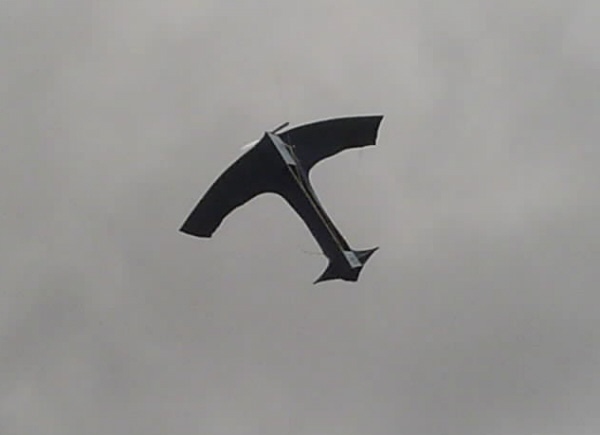
(Fig.
2)
The
sound machine
The
build sound machine (fig. 3) is not a replica of the registered
model. The information given in the catalogue wasn't really
sufficient. So I had to build the propeller and machine to my own
discretion.
At
this time the propeller has been broken too many times. I learned
that it is a good idea first trying to get a proper flying kite
before testing a sound machine. And be patient. A slight impression
of the sound imitating the airplane motor can be heard at the video
fragment.
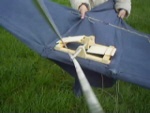
Video
fragment
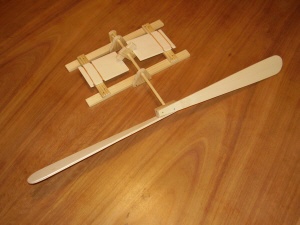
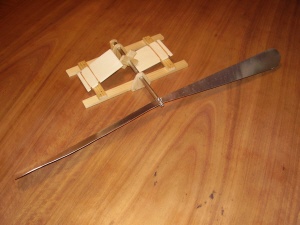
(Fig.
3)
(Fig.
4)
The
propeller made of plywood (fig. 3) is replaced for an aluminium one
(fig. 4) which has the advantage that it only bends and not breaks
after an unfortunately crash. Which happens. and that is why there
is still some work to do on this kite. There is also something to do
at the sound machine, because the original one must have had a more
louder sound.
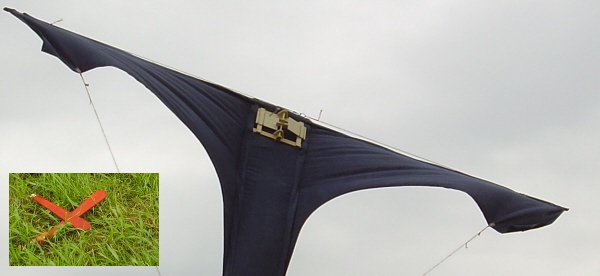
(Fig.
5)
The
fastening of the sound machine is very simple and easy. The four
sticks of the machine slip into four savings in the two spar covers.
(fig. 5 The propeller is already broken again and lying down in the
in the flying field at the spot of the last 'landing' of the
kite.)
Zutphen, June 2006
Jan
Westerink
Photos:
Peer Westerink, JW
Link to the catalogue of
1908: